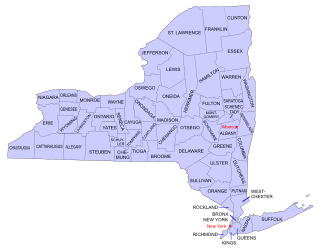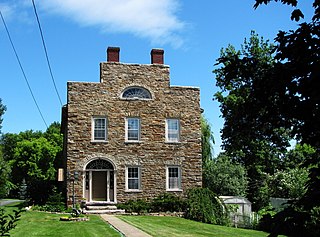Life
He was the son of Amos Fisk and Mary (Wheeler) Fisk. In 1806, he married Phebe Peters (1785–1860), and they had seven children.
He was a member of the New York State Assembly (Clinton Co.) in 1825 and 1826.

The New York State Assembly is the lower house of the New York State Legislature, the New York State Senate being the upper house. There are 150 seats in the Assembly, with each of the 150 Assembly districts having an average population of 128,652. Assembly members serve two-year terms without term limits.

The 48th New York State Legislature, consisting of the New York State Senate and the New York State Assembly, met from January 4 to April 21, 1825, during the first year of DeWitt Clinton's second tenure as Governor of New York, in Albany.

The 49th New York State Legislature, consisting of the New York State Senate and the New York State Assembly, met from January 3 to April 18, 1826, during the second year of DeWitt Clinton's second tenure as Governor of New York, in Albany.
He was a member of the New York State Senate (4th D.) from 1832 to 1835, sitting in the 55th, 56th, 57th and 58th New York State Legislatures.

The New York State Senate is the upper house of the New York State Legislature. There are 63 seats in the Senate, and its members are elected to two-year terms. There are no term limits.

The 55th New York State Legislature, consisting of the New York State Senate and the New York State Assembly, met from January 3 to July 2, 1832, during the fourth year of Enos T. Throop's governorship, in Albany.

The 56th New York State Legislature, consisting of the New York State Senate and the New York State Assembly, met from January 1 to April 30, 1833, during the first year of William L. Marcy's governorship, in Albany.
He was President of the Temperance Society of Keeseville.
He was buried at the Keeseville Old Cemetery in Au Sable, New York.

Au Sable, or Ausable, is a town in Clinton County, New York, United States. The population was 3,146 at the 2010 census. The name is from the Ausable River that flows through the town and means "at the sand".
This page is based on this
Wikipedia article Text is available under the
CC BY-SA 4.0 license; additional terms may apply.
Images, videos and audio are available under their respective licenses.

Clinton Bowen Fisk, for whom Fisk University is named, was a senior officer during Reconstruction in the Bureau of Refugees, Freedmen and Abandoned Lands. He endowed Fisk University with $30,000. In addition, he helped establish the first free public schools in the South for European-American and African-American children.

Buildings, sites, districts, and objects in New York listed on the National Register of Historic Places:

New York State Route 9N (NY 9N) is a north–south state highway in northeastern New York in the United States. It extends from an intersection with U.S. Route 9 (US 9), NY 29, and NY 50 in the city of Saratoga Springs to a junction with US 9 and NY 22 in the Clinton County hamlet of Keeseville. At 143.49 miles (230.92 km) in total length, NY 9N is the longest letter-suffixed route in the state. It is concurrent with its parent route for 1 mile (1.6 km) in the village of Lake George and for three blocks in the hamlet of Elizabethtown.

Lemuel Stetson was a United States Representative from New York.
Ezra Carter Gross was an American lawyer and politician from New York.
Richard Keese was a U.S. Representative from New York.
Josiah Terry Everest was an American lawyer and politician active in New York. He served on the New York State Assembly as the representative for Clinton County.

The Keeseville Historic District is a historic district listed on the National Register of Historic Places containing 142 historic structures in Keeseville, in Essex and Clinton counties in New York, in the United States. The buildings, built between 1820 and 1936, are concentrated on the streets near the Ausable River, which runs through the center of the village.
The 1804 United States House of Representatives elections in New York were held from April 24 to 26, 1804, to elect 17 U.S. Representatives to represent the State of New York in the United States House of Representatives of the 9th United States Congress. At the same time, a vacancy was filled in the 8th United States Congress.
The 1812 United States House of Representatives elections in New York were held from December 15 to 17, 1812, to elect 27 U.S. Representatives to represent the State of New York in the United States House of Representatives of the 13th United States Congress. At the same time, a vacancy was filled in the 12th United States Congress.

The 35th New York State Legislature, consisting of the New York State Senate and the New York State Assembly, met from January 28 to June 19, 1812, during the fifth year of Daniel D. Tompkins's governorship, in Albany.

The 41st New York State Legislature, consisting of the New York State Senate and the New York State Assembly, met from January 27 to April 21, 1818, during the first year of DeWitt Clinton's governorship, in Albany.

The 45th New York State Legislature, consisting of the New York State Senate and the New York State Assembly, met from January 2 to April 17, 1822, during the fifth year of DeWitt Clinton's governorship, in Albany.

The 46th New York State Legislature, consisting of the New York State Senate and the New York State Assembly, met from January 7 to April 24, 1823, during the first year of Joseph C. Yates's governorship, in Albany.

The 51st New York State Legislature, consisting of the New York State Senate and the New York State Assembly, met from January 1 to December 10, 1828, during the fourth year of DeWitt Clinton's second tenure as Governor of New York, and—after Clinton's death—while Nathaniel Pitcher was Governor, in Albany.
Charles Stanford was an American merchant, newspaper publisher and politician from New York.
Samuel Ames was an American lawyer, banker and politician from New York.










